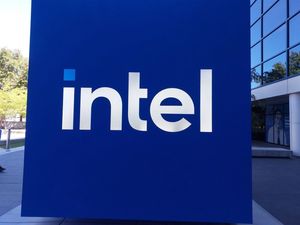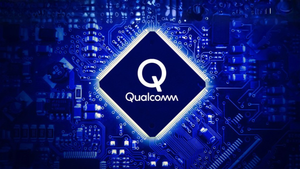
The financial markets of late 2025 present a fascinating dichotomy: a surging tide of optimism around Artificial Intelligence (AI) innovation juxtaposed with the quiet, yet historically significant, performance of precious metals like gold and silver. While the AI revolution continues to capture headlines and investor imagination, driving tech stocks to dizzying heights, a growing chorus of financial strategists is advocating for a more grounded approach: balancing AI's speculative allure with the tangible security of gold realism. This nuanced strategy emerges as gold and silver post historic gains, yet remain structurally under-owned in both private and institutional portfolios, raising critical questions about portfolio resilience in an increasingly volatile global economy.
The Dual Narrative: AI's Ascent Meets Gold's Enduring Strength
The current market environment is characterized by an almost unprecedented bullish sentiment towards Artificial Intelligence. Companies like NVIDIA (NASDAQ: NVDA), Microsoft (NASDAQ: MSFT), and Alphabet (NASDAQ: GOOGL) are leading the charge, fueled by massive investments in AI infrastructure, research, and software. This fervent enthusiasm has propelled major indices to new records, yet it also sparks concerns about potential overvaluation and the formation of an "AI bubble," with warnings from institutions like the Bank of England about "stretched valuations." The concentration of market gains in a select few tech giants further underscores this risk.
In stark contrast, precious metals have been quietly delivering remarkable, "realistic" gains. Gold has embarked on an extraordinary rally, consistently achieving new all-time highs. As of October 8, 2025, spot gold prices have soared past $4,000 per ounce, marking an 11.49% increase over the past month and an impressive 55.04% year-over-year. Over the last five years, gold has surged by 108.54%. Even more striking, gold mining stocks have significantly outperformed in 2025, with a staggering 135% gain, dwarfing the 40% rise in the AI-driven semiconductor sector. This surge is underpinned by aggressive central bank buying (driven by de-dollarization and diversification), persistent geopolitical uncertainties, expectations of Federal Reserve interest rate cuts, its role as an inflation hedge, and a weaker US dollar.
Silver, often gold's less-glamorous counterpart, has also demonstrated robust performance. As of the same date, silver reached $49.48 USD per troy ounce, reflecting a 21.04% increase over the past month and a 62.25% gain year-over-year. Over a five-year period, silver has climbed an impressive 90.05%. Despite these substantial gains, many analysts contend that silver remains undervalued, with increasing industrial demand from sectors like electric vehicles and solar energy, coupled with supply constraints, pointing to strong future potential.
Despite their impressive performance and clear role as wealth preservers, both gold and silver are considered "structurally under-owned" in both individual and institutional investment portfolios. Their ownership largely remains concentrated among specialized investors, indicating that these assets have not yet entered the "euphoric stage" of a bull market. The intense focus and redirection of capital towards the high-growth potential of AI and tech stocks have often overshadowed these traditional safe havens. This under-ownership, coupled with the historically low relative valuation of precious metals compared to other financial assets, suggests considerable potential for revaluation, positioning them as a critical hedge against a potential "AI wobble" or a significant correction in the AI-driven tech boom.
Corporate Fortunes: Who Wins and Who Adjusts?
The strategic pivot towards balancing AI optimism with gold realism carries significant implications for a range of public companies, creating distinct winners and losers depending on their core business. Companies heavily invested in the AI ecosystem, which have enjoyed unprecedented growth, could face a recalibration of their valuations, while precious metals miners stand to gain substantially from renewed investor interest.
On the AI front, giants like NVIDIA (NASDAQ: NVDA), Microsoft (NASDAQ: MSFT), and Alphabet (NASDAQ: GOOGL) are at the epicenter of the current tech boom. NVIDIA, dominating the GPU market essential for AI infrastructure, has seen its revenues and net income soar, with some analysts even projecting a $10 trillion market capitalization by 2030. Microsoft, leveraging its Azure cloud platform and strategic partnership with OpenAI, integrates AI across its vast product suite, driving strong financial performance. Alphabet, with its Gemini AI initiatives and pervasive integration into Search and Cloud services, remains a key player. However, a significant shift in investor sentiment away from pure AI optimism could exert downward pressure on their stock prices. These companies’ high valuations are largely predicated on future growth expectations; any reduction in perceived growth potential or increased scrutiny on immediate profitability could lead to capital outflows, transforming their market perception from "unbridled growth leaders" to potentially "overvalued tech plays." Investors might demand a clearer, more immediate return on their massive AI investments, rather than solely relying on future potential, intensifying concerns about an "AI bubble."
Conversely, major precious metals mining companies such as Barrick Gold (NYSE: GOLD) and Newmont (NYSE: NEM) are poised to be significant beneficiaries of this rebalancing act. Both companies are already experiencing robust performance due to record-high gold prices, driven by global economic uncertainty, geopolitical instability, and expectations of potential interest rate cuts. Barrick Gold has reported increased revenue and net earnings, alongside strong operating cash flow and a commitment to shareholder returns. Its diversified portfolio and recent gold discoveries further bolster its prospects. Newmont, similarly, is benefiting from elevated gold prices, reporting strong quarterly profits and record free cash flow, alongside a substantial share buyback program.
A pivot towards "gold realism" would likely translate into increased capital inflow and stronger valuations for these mining companies. As investors increasingly seek stability, inflation hedges, and safe havens, gold's appeal grows, directly boosting the profitability and stock prices of Barrick Gold and Newmont. Their market perception would likely be enhanced, solidifying their status as reliable "value" investments and defensive assets, appealing to investors looking to mitigate risk in uncertain economic environments. This movement represents a fundamental re-evaluation of risk and reward within investment portfolios, favoring tangible assets and current profitability over speculative future growth, potentially leading to a broader "growth to value" rotation across the market.
Wider Significance: A Prudent Hedge in a Transformative Era
The argument for balancing AI optimism with gold realism is not merely a tactical investment shift; it reflects a deeper understanding of broader industry trends and the evolving global economic landscape. AI's transformative growth is undeniable, with the global AI market projected to skyrocket from an estimated $189 billion in 2023 to $4.8 trillion by 2033, a 25-fold increase. This exponential growth, fueled by advancements in generative AI and edge computing, positions AI as a dominant force across technology, finance, and virtually every other sector, promising unprecedented efficiency, innovation, and economic growth. Companies that successfully integrate AI into their business models are gaining a significant competitive edge, creating a widening gap between AI leaders and laggards.
However, this technological revolution also introduces complex ripple effects and potential vulnerabilities. The intense competition within the tech industry, driven by AI, necessitates massive investments in research and development, potentially leading to market consolidation and increased barriers to entry for smaller players. Furthermore, the sheer scale of investment required for AI infrastructure, potentially fueled by government spending and central bank actions, could contribute to inflationary pressures, making gold's role as an inflation hedge even more critical. Interestingly, AI itself is creating a new source of demand for gold, as the precious metal is an essential component in manufacturing AI-enabled devices, processors, and data center hardware due to its superior conductivity and corrosion resistance.
The regulatory landscape for AI is rapidly evolving globally, with a focus on a risk-based approach. Jurisdictions like the EU, US, and China are developing frameworks to address the ethical, societal, and economic implications of AI, focusing on principles such as human rights, transparency, and robust risk management. This fragmented regulatory environment adds a layer of complexity for AI companies and could influence investment flows. In contrast, while governments don't typically regulate precious metal purchases directly, central bank policies regarding interest rates and monetary easing significantly impact gold prices, as a weaker currency often increases demand for safe-haven assets. The growing interest in critical minerals could also subtly shift investment patterns, though gold's fundamental role remains distinct.
Historically, market dynamics have shown precedents for such asset allocation shifts. The dot-com bubble of the late 1990s serves as a stark reminder. During that period, speculative investments poured into high-growth internet stocks, while gold languished. However, when the bubble burst in 2000, investors rapidly shifted into safe havens like gold, which then embarked on an impressive multi-year rally. Today's AI boom, with its "stretched valuations" and concentration of gains in a few tech giants, draws parallels to this historical episode, prompting warnings from institutions like the Bank of England. The "AI-Gold Balance" strategy, therefore, fits into these wider dynamics as a prudent risk management approach, advocating for diversified portfolios that can weather potential market downturns in the tech sector while capitalizing on gold's enduring value as a counter-cyclical asset and an inflation hedge. It acknowledges that while AI promises transformative growth, the global economy still requires tangible assets to provide stability and protection against uncertainty.
What Comes Next: Navigating the Future of Investment
The interplay between AI optimism and gold realism is set to define investment strategies in both the short-term (next 6-12 months) and the long-term (3-5 years). In the immediate future, AI is expected to continue its rapid growth, with small businesses projected to increase AI spending by 40% over the next two years, driving efficiency and productivity across sectors. Opportunities will likely remain in leading AI companies, particularly in semiconductors and cloud services, though growing concerns about "AI washing," unsound products, and the high failure rate of AI projects (estimated at 80% for some initiatives) suggest that investors should be prepared for potential volatility and opportunistic entry points.
Concurrently, gold is anticipated to maintain its strong rally, with analysts projecting prices to stabilize between $3,800 and $4,000 per ounce by the end of 2025, potentially reaching $4,000 by mid-2026. This upward trend is underpinned by persistent geopolitical tensions, inflation concerns, currency volatility, and robust central bank demand. Gold is increasingly viewed as a critical hedge against a potential implosion of the AI-driven tech boom. Consequently, investors are advised to maintain diversified exposure, with gold offering inflation protection and stability, while AI provides growth potential. Dynamic rebalancing will be crucial to adjust allocations as market conditions evolve.
Looking further out, over the next 3-5 years, AI is poised to drive significant economic transformation, with robust investment in infrastructure and widespread global adoption. Generative AI alone is projected to add trillions to the global economy and boost labor productivity. AI and quantum computing are expected to revolutionize portfolio management, leading to new financial instruments and investment vehicles. For gold, the long-term outlook remains bullish, with predictions ranging from $4,200-$4,500/oz in the medium term and potentially exceeding $5,000/oz by 2030, driven by continued inflation, geopolitical risks, and sustained central bank demand. Digital innovations like tokenized gold could further enhance its appeal and accessibility.
Strategic pivots for investors will include dynamic rebalancing between AI and gold, focusing on "responsible AI" companies with strong governance, and actively hedging against the risk of an "AI bubble." Embracing digital gold and diversifying within AI beyond core tech providers to include companies applying AI across various industries will also be key. Market opportunities abound in AI-driven productivity gains and new investment avenues, while challenges include valuation concerns, high project failure rates, and evolving regulatory scrutiny. For gold, opportunities lie in its safe-haven demand, central bank accumulation, and digitalization, though challenges include its non-yielding nature and price volatility.
Potential scenarios range from a continued AI boom with moderate global uncertainty, where a balanced portfolio thrives, to a severe "AI bubble" burst, where gold acts as a crucial insurance policy. Alternatively, if AI fails to deliver widespread productivity gains, gold could provide essential stability. Conversely, an era of geopolitical stability and strong, low-inflationary growth might diminish gold's appeal, shifting focus back to AI-driven growth. Navigating these possibilities will require continuous monitoring and adaptive strategies, weighing the "AI optimism" for innovation against the "gold realism" of market uncertainties and potential bubbles.
Comprehensive Wrap-up: A Call for Prudent Diversification
In summary, the current financial landscape demands a sophisticated approach to investment, acknowledging both the exhilarating promise of Artificial Intelligence and the enduring, yet often overlooked, stability of precious metals. Gold and silver's historic gains, coupled with their structural under-ownership, present a compelling case for their inclusion as a vital hedge against the potential exuberance and volatility inherent in the rapidly expanding AI sector.
Moving forward, the market will likely continue to be shaped by the dual forces of technological innovation and macroeconomic uncertainty. Investors who adopt a balanced strategy, tempering AI optimism with gold realism, are better positioned to navigate these complexities. This means not only seeking exposure to transformative AI companies but also allocating a meaningful portion of portfolios to gold as a diversifier, an inflation hedge, and a safe haven against geopolitical risks and potential market corrections.
What investors should watch for in the coming months includes the trajectory of interest rate policies, further developments in AI regulation, the evolution of geopolitical tensions, and any shifts in central bank gold purchasing trends. The ability to dynamically rebalance portfolios in response to these factors will be paramount. Ultimately, the lesson from this period is clear: while innovation drives growth, prudence and diversification remain the bedrock of resilient investment strategies.
This content is intended for informational purposes only and is not financial advice.






